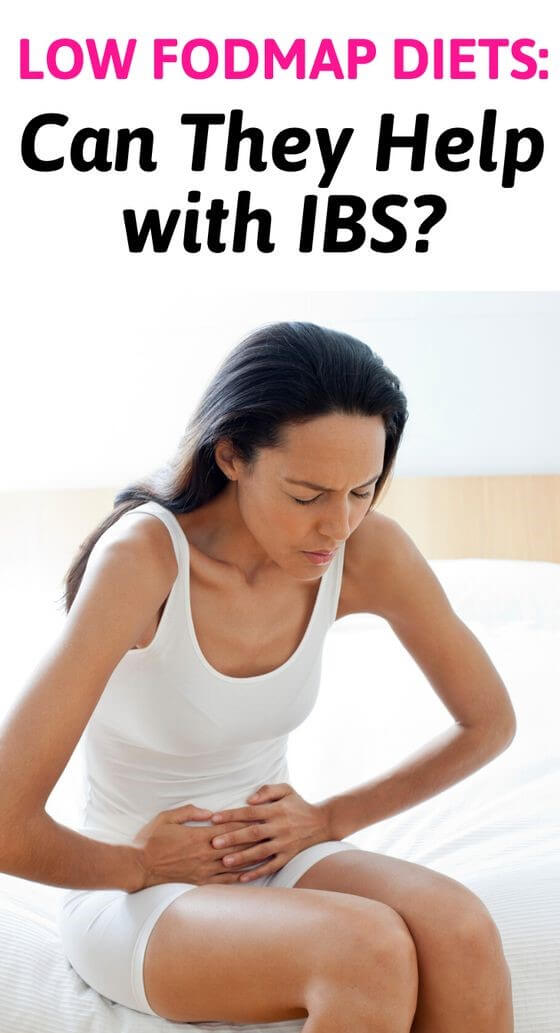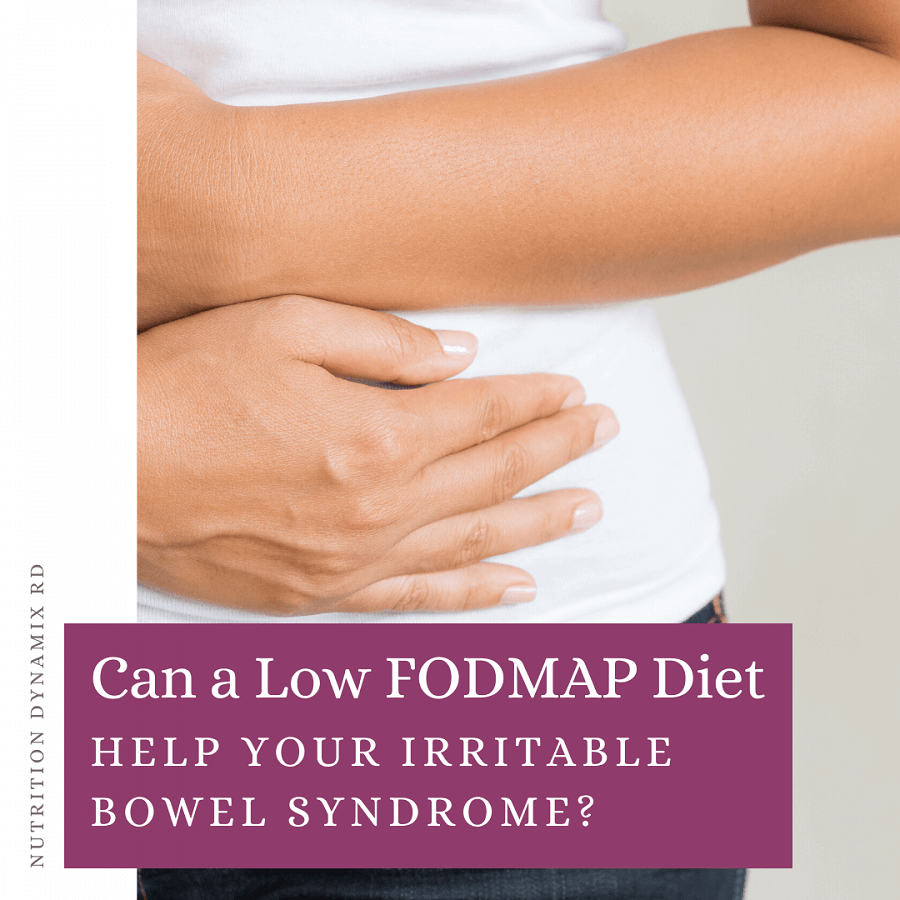Irritable Bowel Syndrome (IBS) can be a frustrating diagnosis. There is no special blood test that confirms it. It's actually the opposite! It's rather a lack of evidence that there is something wrong with your digestive system. So, what exactly is Irritable Bowel Syndrome and can a Low FODMAP Diet help?
How is Irritable Bowel Syndrome (IBS) diagnosed?
According to the American College of Gastroenterology, it is estimated that 10 to 15% of the adult population in the United States suffers from IBS symptoms, yet only 5 to 7% of adults have actually been diagnosed with the disease. IBS is the most common disease diagnosed by gastroenterologists. It is also one of the most common disorders seen by primary care physicians.
There is no definitive test for IBS. It is diagnosed by a review of your symptoms and ruling out whether there may be a more serious condition. Symptoms involve abdominal cramping and discomfort, excess gas, bloating and distention, diarrhea, constipation (or both). If your symptoms involve chronic diarrhea, your doctor may order a colonoscopy or endoscopy to look at the inside of your bowels. During the procedure, they may take biopsies to test for Irritable Bowel Diseases (IBD) such as Crohn's Disease, Ulcerative Colitis, or Celiac Disease. If these are all negative, they will usually send you home with instructions for a fiber supplement or an anti-diarrheal medication. Then what??
You could have Irritable Bowel Syndrome (IBS) if you meet the following symptoms (Rome IV Criteria):

Types of Irritable Bowel Syndrome (IBS)
There are 3 different types of IBS:
- #1 Diarrhea Predominant (IBS-D)
- #2 Constipation Predominant (IBS-C)
- #3 A Mix of both Diarrhea and Constipation (IBS-Mixed)
What is a Low FODMAP Diet?
Research on the Low FODMAP Diet started back in 2005 at Monash University in Melbourne, Australia. It has been scientifically proven to help symptoms of Irritable Bowel Syndrome. If carried out correctly, research has shown that approximately 75% of people with IBS who followed a Low FODMAP Diet had significant symptom relief. I see these positive results in my office every day!
FODMAPs are a group of short chain carbohydrates that can be poorly absorbed in the small intestine or are completely indigestible in some people. The acronym stands for Fermentable Oligosaccharides, Disaccharides, Monosaccharides, and Polyols. Let's translate these complicated words into simple guidelines!
Some Foods to Avoid While on the Elimination Phase of a Low FODMAP Diet:
1. High Lactose Dairy
- Lactose is found naturally in dairy products. Lactose content varies from less than 1 gram in a serving of cheese to 6-20 grams in a serving of milk or yogurt. You can manage your intolerance by choosing lactose free dairy or dairy alternatives (almond milk, soy milk, rice milk). You can also limit your portions of cheese to 1 oz at a time (1 slice or 1/4 cup shredded) without having to give cheese up entirely. Your ability to digest lactose can often improve with time. This is especially true if you have chronic diarrhea and you are able to get your bowel movements back to normal with dietary changes.
2. Stone Fruits
- Fruits are made of natural sugar. Although fruit is a healthy source of vitamins, minerals, fiber, and antioxidants, too much can wreak havoc on your digestive system. Stone fruits (such as cherries, mangoes, plums, peaches, and avocados) are especially high in FODMAPs. Other fruits high in FODMAPs include apples, blackberries, watermelon, and dates. Also keep in mind that as fruit ripens, the sugar intensifies. This means that bananas may be tolerated when they are yellow, but if you wait until brown spots develop, it can increase the amount of fructose and cause problems. So, if you pack your morning smoothie with too much fruit, it can leave you feeling bloated and uncomfortable before you even get to work!
3. Onion, Garlic, and Certain Vegetables
- Vegetables are an extremely important part of a healthy diet, but too much of a good thing when you're FODMAP sensitive can be bad. Possible triggers are cauliflower, mushrooms, onion, garlic, asparagus, and sugar snap peas. Concentrated tomato products (tomato pastes, sun dried tomatoes) can also cause problems.
4. Certain Beans & Nuts
- Beans, nuts, and legumes are healthy plant-based protein sources; however, those with sensitivities may need to eat them in moderation. Foods that are especially high in FODMAPs include cashews, pistachios, kidney beans, black beans, and split peas.
5. Wheat, Barley, & Rye
- Grains such as wheat, barley and rye can be culprits of gas and bloating. This isn't necessarily because of the gluten protein they contain, but rather because of the Fructans. These are types of Carbohydrates that can ferment in the bowel and can cause problems. Sourdough wheat bread can be a safe alternative for many people because the natural fermentation of the yeast starter can "eat up" those problem-causing Fructans, making it easier to digest.
6. Sweeteners
- Sweeteners like honey, agave nectar, and high fructose corn syrup have the highest FODMAP content. Do you chew gum or eat breath mints? Calorie free sugar alcohols (sorbitol, mannitol, xylitol) are common ingredients in gum. These could be causing your stomach problems. In addition, the fact that you swallow a fair amount of air while chewing gum can magnify the problem!
The biggest mistake people make is trying to follow a Low FODMAP Diet for too long. The diet is designed to have an Elimination Phase during which all high FODMAP foods are avoided. This is followed by a Challenge Phase when a qualified nutrition professional assists you in strategically introducing different categories of FODMAPs. This is an important phase that allows you to pinpoint exactly what types of FODMAP cause your gas, bloating or bowel irregularity. This allows you to only avoid the FODMAP categories that are necessary for improving your IBS.
How long is the Elimination Phase of the FODMAP Diet?
If you are FODMAP sensitive and are correctly following the Low FODMAP Diet, symptoms of gas, bloating, and diarrhea usually improve during the first few days. If you are constipated, it may take longer. In most cases, I have my patients only eating a strict Low FODMAP Diet for approximately 10-14 days.
An organized approach to "challenge" different categories of FODMAPs is then used to pinpoint exact food sensitivities or intolerances. I will help you to recognize which foods need to be limited for longer term. Don't follow a Low FODMAP Diet forever! My goal for you is to only have you avoiding those foods you are sensitive. I want you to liberalize your diet as much as possible while keeping your stomach happy!
The above list may seen daunting. Rest assured that most people are only sensitive to several categories of FODMAPs and not all.
Is gas, bloating, or bowel irregularity making you (or those around you) uncomfortable?
Make an appointment with Nutrition Dynamix to help get your IBS under control. Office visits are available at the Longmont location or virtually anywhere in Colorado or Wyoming. We accept most major insurances for payment.


